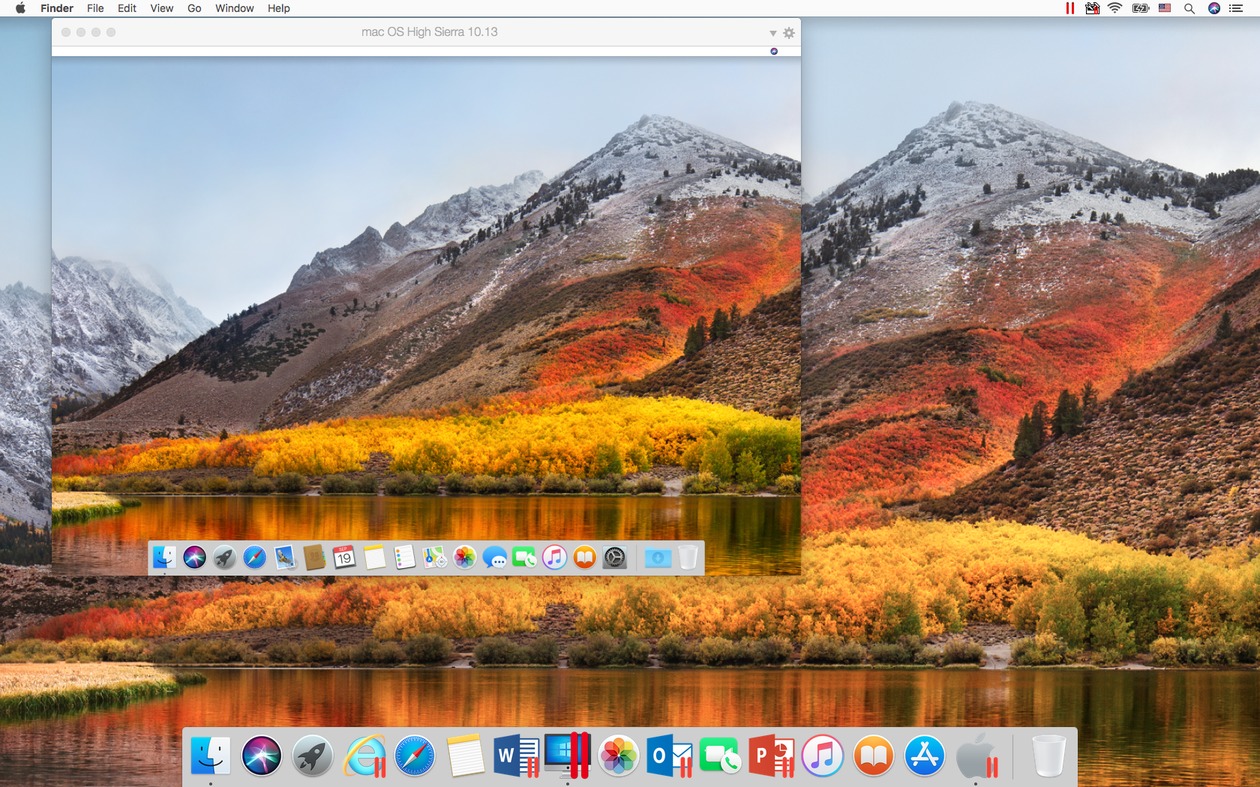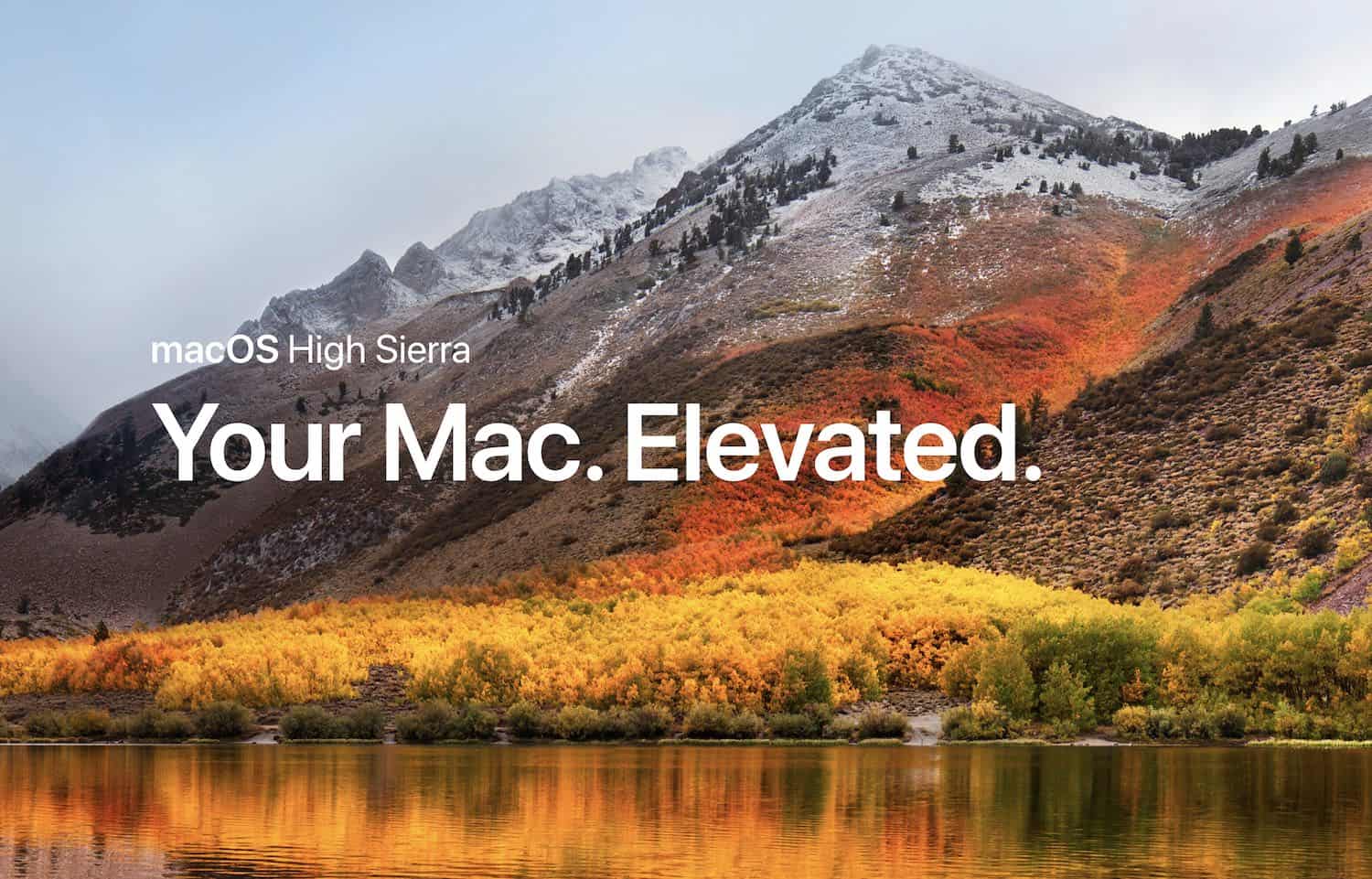Fusion Drive, a storage option on some iMac and Mac mini computers, combines a hard drive and flash storage in a single volume for improved performance and storage capacity. If your Fusion Drive appears as two drives instead of one in the Finder, it's no longer working as a Fusion Drive. This can happen after replacing either drive of your Fusion Drive, or using software to intentionally split them into separate volumes.
- High Sierra Macos
- Fuse For Macos High Sierra 10.13
- Macos Sierra Install
- Macos High Sierra Beta
- Fuse For Macos High Sierra 10.12
Microsoft word 2019 vl 16 34. You can continue using the two drives independently, or follow these steps to regain the benefits of having the single logical volume of a Fusion Drive.
Before you begin
If you're not sure that your Mac was configured with a Fusion Drive, or that the drive has been split:
- Disconnect any external storage devices from your Mac.
- Choose Apple menu > About This Mac, then click Storage.
- If you see a drive labeled Fusion Drive, your Fusion Drive is working and this article doesn't apply to you.
- If you have a Fusion Drive that has been split, you should see two drives. One of them should be labeled Flash Storage, with a capacity of 24GB, 32GB, or 128GB. The other should be at least 1TB.
Overview FUSE for macOS (was OSXFUSE) allows you to extend OS X's native file-handling capabilities via third-party file systems. It is a successor to MacFUSE, which is no longer being maintained. Vst plugins for.
Use Terminal to create a Fusion Drive again
These steps permanently delete all data stored on the drives that make up your Fusion Drive. Make sure that you have a backup before continuing.
It uses the FUSE file system interface so that it can talk to any Unix like OS including the Mac OS X. Does NTFS-3G support macOS High Sierra 10.13? NTFS-3G is NOT compatible with macOS High Sierra 10.13, and it is an open source software with some shortcomings as below: 1. Slow write speed. NTFS-3G often write NTFS drive with very slow. FUSE is the Filesystem in Userspace, a operating system extension that allows non-root users to create mountable filesystems. FUSE is available for most UNIX-like operating systems, including OS X. The first step to using SSHFS is to install FUSE for OS X (There's a prior version called MacFUSE, you don't want that).
If you're using macOS Mojave or later
- Turn on your Mac, then immediately press and hold Command-R to start up from macOS Recovery. Release the keys when you see the Apple logo or spinning globe.
- When you see the macOS Utilities window, choose Utilities > Terminal from the menu bar.
- Type
diskutil resetFusionin the Terminal window, then press Return. - Type
Yes(with a capital Y) when prompted, then press Return. - When Terminal indicates that the operation was successful, quit Terminal to return to the macOS Utilities window.
- Choose Reinstall macOS, then follow the onscreen instructions to reinstall the Mac operating system. Your Mac restarts from your Fusion Drive when done.
If you're using macOS High Sierra or earlier
- Turn on your Mac, then immediately press and hold Command-R to start up from macOS Recovery. Release the keys you see the Apple logo or spinning globe.
- When you see the macOS Utilities window, choose Utilities > Terminal from the menu bar.
- Type
diskutil listin the Terminal window, then press Return. - Terminal displays a table of data about your drives. In the IDENTIFIER column, find the identifier for each of the two internal, physical drives that make up your Fusion Drive. Usually the identifiers are disk0 and disk1. One of them should be 128GB or less in size. The other at least 1TB in size.
- Type the following command, replacing identifier1 and identifier2 with the identifiers you found in the previous step. Then press Return.
Example: diskutil cs create Macintosh HD disk0 disk1
- If you get a disk unmounting error, enter
diskutil unmountDisk identifier, using the first identifier you gathered previously. Then enter same command again using the second identifier. Then retry the command in step 5. - Type
diskutil cs list, then press Return. - Terminal displays additional data about your drives (volumes). Find the string of numbers that appears after 'Logical Volume Group' for the volume named Macintosh HD. It's a number like 8354AFC3-BF97-4589-A407-25453FD2815A.
Example:
+-- Logical Volume Group 8354AFC3-BF97-4589-A407-25453FD2815A
|
| Name: Macintosh HD - Type the following command, replacing logicalvolumegroup with the number you found in the previous step. Then press Return.
Cold waters (2017). Example: diskutil cs createVolume 8354AFC3-BF97-4589-A407-25453FD2815A jhfs+ Macintosh HD 100% Girl voice changer for teamspeak 3.
- When Terminal indicates that the operation was successful, quit Terminal to return to the macOS Utilities window.
- Choose Reinstall macOS, then follow the onscreen instructions to reinstall the Mac operating system. Your Mac restarts from your Fusion Drive when done.
What is macFUSE?
macFUSE allows you to extend macOS's native file handling capabilities via third-party file systems.
Features
As a user, installing the macFUSE software package will let you use any third-party FUSE file system. Torrent mahler complete edition. Legacy MacFUSE file systems are supported through the optional MacFUSE compatibility layer.

High Sierra Macos
As a developer, you can use the FUSE SDK to write numerous types of new file systems as regular user space programs. The content of these file systems can come from anywhere: from the local disk, from across the network, from memory, or any other combination of sources. Writing a file system using FUSE is orders of magnitude easier and quicker than the traditional approach of writing in-kernel file systems. Since FUSE file systems are regular applications (as opposed to kernel extensions), you have just as much flexibility and choice in programming tools, debuggers, and libraries as you have if you were developing standard macOS applications.
Fuse For Macos High Sierra 10.13
How It Works
Macos Sierra Install
In more technical terms, FUSE implements a mechanism that makes it possible to implement a fully functional file system in a user-space program on macOS. It provides multiple APIs, one of which is a superset of the FUSE API (file system in user space) that originated on Linux. Therefore, many existing FUSE file systems become readily usable on macOS.
Macos High Sierra Beta
The macFUSE software consists of a kernel extension and various user space libraries and tools. It comes with C-based and Objective-C-based SDKs. If you prefer another language (say, Python or Java), you should be able to create file systems in those languages after you install the relevant language bindings yourself. Mac apple store.
Fuse For Macos High Sierra 10.12

High Sierra Macos
As a developer, you can use the FUSE SDK to write numerous types of new file systems as regular user space programs. The content of these file systems can come from anywhere: from the local disk, from across the network, from memory, or any other combination of sources. Writing a file system using FUSE is orders of magnitude easier and quicker than the traditional approach of writing in-kernel file systems. Since FUSE file systems are regular applications (as opposed to kernel extensions), you have just as much flexibility and choice in programming tools, debuggers, and libraries as you have if you were developing standard macOS applications.
Fuse For Macos High Sierra 10.13
How It Works
Macos Sierra Install
In more technical terms, FUSE implements a mechanism that makes it possible to implement a fully functional file system in a user-space program on macOS. It provides multiple APIs, one of which is a superset of the FUSE API (file system in user space) that originated on Linux. Therefore, many existing FUSE file systems become readily usable on macOS.
Macos High Sierra Beta
The macFUSE software consists of a kernel extension and various user space libraries and tools. It comes with C-based and Objective-C-based SDKs. If you prefer another language (say, Python or Java), you should be able to create file systems in those languages after you install the relevant language bindings yourself. Mac apple store.
Fuse For Macos High Sierra 10.12
The filesystems repository contains source code for several exciting and useful file systems for you to browse, compile, and build upon, such as sshfs, procfs, AccessibilityFS, GrabFS, LoopbackFS, SpotlightFS, and YouTubeFS. Directv now watch online.
